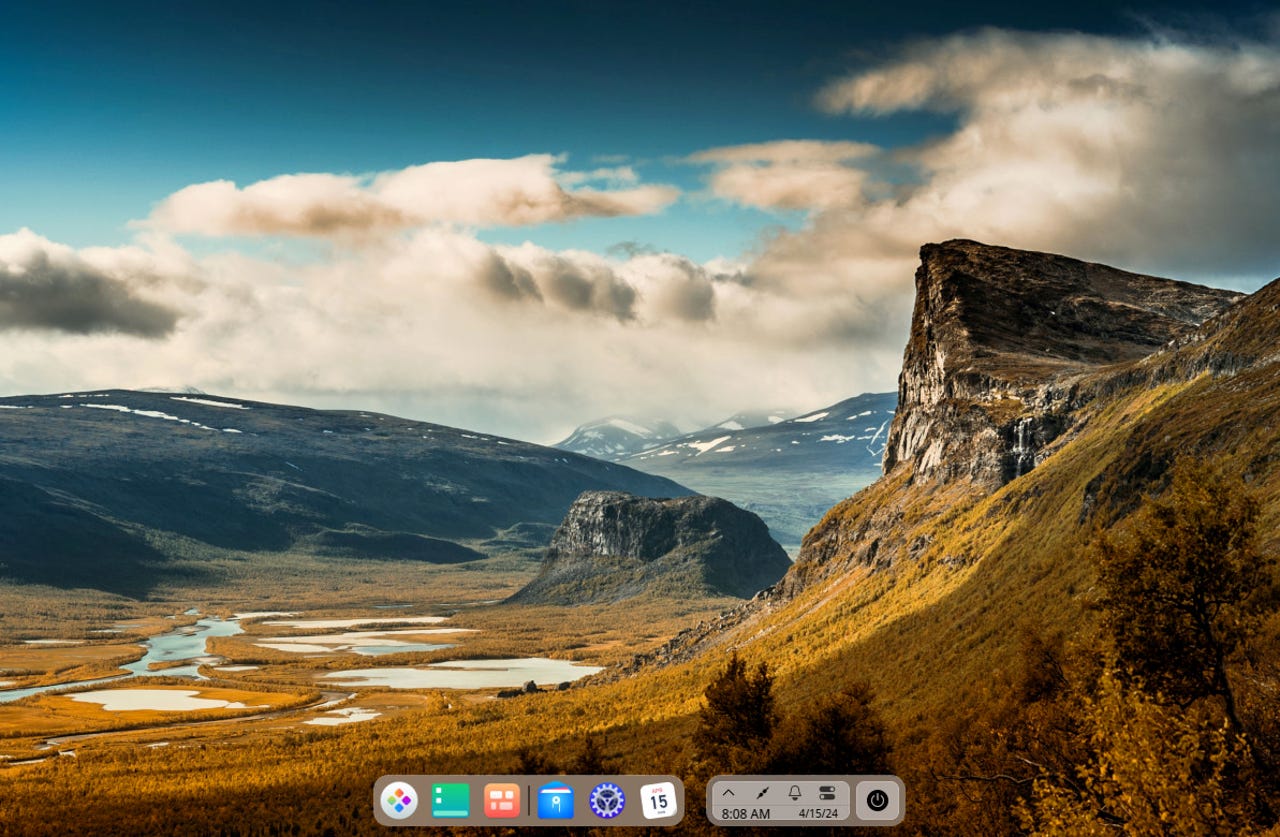
ZDNET’s key takeaways
- RebornOS is a beautiful, user-friendly take on Arch Linux that is available now and can be installed for free.
- RebornOS offers a desktop environment for just about any user type (selected during installation).
- The pre-installed app store is broken and has to be replaced with another.
RebornOS is built by a team of developers, artists, and other individuals with one important goal: to make Arch Linux as user-friendly as possible.
I can say, wholeheartedly, that the team has achieved that goal. RebornOS makes Arch Linux easy to use and, with the right desktop, an adventure in fun and elegance.
Also: Dynebolic is a portable Linux distribution that can be used without installation
Did I say “right desktop?” I did. Why? During installation, you can choose from the following desktop environments:
- Cinnamon
- Budgie
- GNOME
- Xfce
- MATE
- Deepin
- UKUI
- LXDE
- LXQt
- Trinity
- Regolith
- Cutefish
- Enlightenment
- Openbox
- i3
Of course, not all desktops are created equally and from the above list, you’ll find some environments to be more user-friendly and elegant than others. I opted to go with the Deepin desktop environment because it’s one of the more aesthetic desktops on the market. I would also put Cutefish on that list, but I’ve had some issues with Cutefish-based distributions lately. So, Deepin it is.
For those who are curious as to what the hardware requirements are, here’s the list of minimum/recommend:
- CPU – 1.2 GHz dual core/2.1 GHz quad core
- RAM – 2 GB/4 GB
- Storage – 20 GB/64 GB or more
Judging from the above, you shouldn’t have any problem installing RebornOS on just about any computer purchased within the last 10 years.
Also: 5 Linux file and folder management commands you need to know
As I said, RebornOS is based on Arch Linux but don’t let that scare you away. Although Arch Linux itself can be a bit of a challenge, numerous distributions aim to simplify it. Some of those distributions succeed, while others seem to only go halfway. RebornOS goes all the way to the finish line with this task to create an operating system that anyone could start using and have next to no problems.
From the desktop, click the main menu to find all of the pre-installed applications, a searchable menu, the ability to list items by category or in alphabetical order, switch the menu from a pop-up to an overview-style, and even a right-click context menu so you can add items to favorites, send them to the desktop or the dock, set them to start at login, use a proxy, and even uninstall them.
The Deepin desktop menu makes locating your installed applications and controlling your machine a breeze.
Jack Wallen/ZDNET
The artists involved configured Deepin desktop to look fantastic out of the box. I was very pleased that they skipped the dark theme (as so many distributions seem to use as the default these days) and added the right amount of blur/transparency to make it all come together with a decidedly modern flare that isn’t over the top.
As I said, you can install the desktop of your choosing but not every option found in RebornOS will be as beautiful as Deepin. The next closest options would be Budgie and Cutefish. Or, if you want something that’s very straightforward and simple, go with Cinnamon, or MATE. If you want a desktop that offers more configuration options than you’ll ever need, take a look at either Xfce or Enlightenment. If modern and minimal are your thing, go with GNOME. If you want tiling, there’s i3. You get the picture… there’s a desktop for everyone.
The only slight against RebornOS is the list of pre-installed software. You won’t find an office suite, an email client, or an image editor. You will find apps like Calendar, File Manager, Firewall Configuration, MPV Media Player, Movie, and more. The good news is that there’s the Pamac GUI app installer that makes installing/updating applications a breeze.
Also: My top 5 user-friendly GUI backup tools for the Linux desktop
I did have a small issue with Pamac after the installation. When I tried to run the app, it refused to sync with the update databases and wouldn’t show any applications available for installation. Fortunately, I knew how to update Arch manually (with the command sudo pacman -Syu). After running that command (and rebooting), I expected Pamac to behave exactly as expected. It did not.
Turns out, Pamac is fairly broken, so the solution is to install the bauh GUI with the command:
sudo pacman -Sy bauh
Once you’ve installed bauh, everything works as expected (except paman, which is a lost cause for the moment).
You can install any software found in numerous Arch repositories from bauh.
Jack Wallen/ZDNET
Outside of that one issue, RebornOS is a delight to use. Anyone looking for a desktop distribution that makes Arch Linux easy, offers a desktop environment for all types of users and can be installed and used for free, I would highly recommend giving this take on Linux a try. Just remember to skip pamac and go straight to bauh, otherwise you’ll wind up frustrated over an app that should make installing software easy is broken beyond repair.
Open Source




















